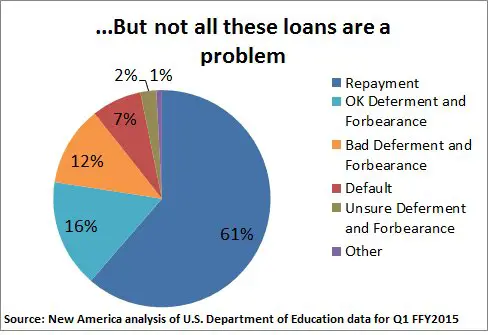Are you ready to dive into the world of capital market instruments? Look no further! This blog article is your comprehensive guide to understanding these financial tools. Whether you’re a novice investor looking to expand your knowledge or a seasoned trader seeking to brush up on the basics, this article will provide you with the insights and clarity you need. From stocks and bonds to derivatives and commodities, we’ll demystify these instruments and equip you with the knowledge to navigate the dynamic world of the capital market. Let’s embark on this educational journey together and unravel the mysteries of capital market instruments.
Guide to Understanding Capital Market Instruments
Investing in the capital market can be an exciting and profitable venture, but it’s important to have a solid understanding of the various instruments involved. From stocks to bonds, options to futures, there are numerous financial instruments available to investors. In this comprehensive guide, we will explore the different types of capital market instruments, how they work, and the risks and rewards associated with each.
1. Stocks
Stocks, also known as shares or equities, represent ownership in a company. When you buy a stock, you become a shareholder and have a claim on the company’s assets and earnings. Here are some key points to understand about stocks:
- Stocks can be classified into common and preferred stocks. Common stockholders have voting rights and can receive dividends, while preferred stockholders have a fixed dividend but limited voting rights.
- The value of a stock is influenced by various factors, including company performance, industry trends, and market sentiment.
- Investing in stocks can offer potential capital appreciation and dividend income, but it also carries risks, such as price volatility and the potential for loss of investment.
- Stocks can be bought and sold on stock exchanges or through over-the-counter (OTC) markets.
2. Bonds
Bonds are debt instruments issued by governments, municipalities, and corporations to raise capital. When you buy a bond, you are essentially lending money to the issuer in exchange for periodic interest payments and the return of the principal amount at maturity. Here’s what you need to know about bonds:
- Bonds have a fixed maturity date, upon which the issuer repays the principal amount to the bondholder.
- The interest rate on a bond, known as the coupon rate, determines the periodic interest payments.
- Bonds are generally considered less risky than stocks but offer lower potential returns. They are commonly used for income generation and capital preservation.
- Bond prices can fluctuate based on changes in interest rates and the creditworthiness of the issuer.
3. Mutual Funds
Mutual funds pool money from multiple investors to invest in a diversified portfolio of stocks, bonds, or other securities. They are managed by professional fund managers. Here’s what you should know about mutual funds:
- Mutual funds offer diversification, allowing investors to access a wide range of securities with a relatively small investment.
- They are available in different types, such as equity funds, bond funds, and balanced funds, catering to various investment objectives and risk profiles.
- Mutual funds charge fees, including management fees and operating expenses, which can impact overall returns.
- Investors can buy or sell mutual fund shares at the net asset value (NAV) price, which is calculated at the end of each trading day.
4. Exchange-Traded Funds (ETFs)
ETFs are similar to mutual funds but are traded on stock exchanges like individual stocks. They offer the flexibility of intraday trading and can track various market indices or specific sectors. Here’s a closer look at ETFs:
- ETFs provide exposure to a diversified portfolio of securities, similar to mutual funds.
- They can be passively managed, tracking a specific index, or actively managed, where fund managers make investment decisions.
- Investors can buy and sell ETF shares on stock exchanges throughout the trading day at market prices.
- ETFs can be a cost-effective investment option due to their lower expense ratios compared to some mutual funds.
5. Options
Options are derivatives that give investors the right, but not the obligation, to buy (call option) or sell (put option) an underlying asset, such as a stock, at a predetermined price (strike price) within a specific period. Here’s what you need to understand about options:
- Options provide leverage, allowing investors to control a larger position with a smaller investment.
- They are commonly used for hedging against price movements, speculating on market direction, or generating income through option writing.
- Options have an expiration date, after which they become worthless if not exercised.
- Trading options involves understanding concepts like premium, intrinsic value, time value, and various strategies for managing risk.
6. Futures
Futures contracts are agreements to buy or sell an underlying asset at a predetermined price on a specified future date. They are widely used for hedging and speculation. Here’s an overview of futures:
- Futures contracts exist for various assets, including commodities, currencies, stock market indices, and interest rates.
- They are standardized contracts traded on futures exchanges, with set contract sizes, delivery dates, and quality specifications.
- Futures allow investors to profit from both rising and falling markets by taking long (buy) or short (sell) positions.
- Leverage and margin requirements play a significant role in futures trading, with potential for substantial gains or losses.
In conclusion, understanding the different types of capital market instruments is essential for successful investing. Stocks, bonds, mutual funds, ETFs, options, and futures each have their unique characteristics and risk profiles. By comprehending these instruments and their potential rewards and risks, investors can make informed decisions and build a well-diversified portfolio. Remember, it’s crucial to research, seek professional advice when needed, and continuously educate yourself to navigate the capital market effectively. Happy investing!
Intro to Capital Markets | Part 1 | Defining Capital Markets
Frequently Asked Questions
Frequently Asked Questions (FAQs)
1. What are capital market instruments?
Capital market instruments refer to various financial assets that are traded on the capital market. These can include stocks, bonds, derivatives, and other securities.
2. How can I invest in capital market instruments?
To invest in capital market instruments, you can open a brokerage account with a registered stockbroker. Once you have an account, you can buy and sell these instruments through the stock exchange.
3. What are the benefits of investing in capital market instruments?
Investing in capital market instruments can provide you with opportunities for long-term wealth growth, portfolio diversification, and potential income through dividends or interest payments.
4. What are the risks associated with capital market instruments?
There are risks involved in investing in capital market instruments, such as market volatility, economic factors, liquidity risks, and the potential for loss of capital. It is important to conduct thorough research and seek professional advice before making any investment decisions.
5. How do I analyze capital market instruments?
Analyzing capital market instruments involves evaluating various factors such as financial statements, market trends, industry analysis, and risk assessment. Fundamental analysis and technical analysis are commonly used methods for analyzing these instruments.
6. Can I invest in capital market instruments with a small amount of money?
Yes, you can start investing in capital market instruments with a small amount of money. There are certain investment options like mutual funds or exchange-traded funds (ETFs) that allow you to invest with smaller sums of money compared to directly buying individual stocks or bonds.
7. What is the difference between stocks and bonds?
Stocks represent ownership in a company, providing you with potential capital appreciation and voting rights. Bonds, on the other hand, are debt instruments issued by companies or governments, offering fixed interest payments over a specified period of time.
8. Are capital market instruments suitable for beginners?
While investing in capital market instruments can be suitable for beginners, it is essential to gain knowledge about the risks and potential rewards associated with different instruments. It is advisable to start with smaller investments and gradually expand your portfolio as you gain experience and understanding.
Final Thoughts
Understanding capital market instruments is crucial for both investors and businesses looking to raise funds. From stocks and bonds to derivatives and commodities, these instruments enable participation in the capital markets and provide opportunities for growth and diversification. By familiarizing themselves with the various types and characteristics of these instruments, investors can make informed decisions based on their risk appetite and investment goals. Additionally, businesses can utilize capital market instruments to raise funds for expansion or to manage their financial obligations. This comprehensive guide to understanding capital market instruments equips readers with the knowledge necessary to navigate the complexities of the financial world and make informed investment decisions.



